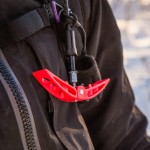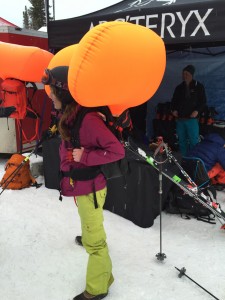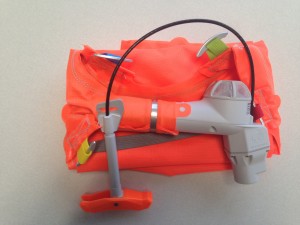This is a quick roundup of new avalanche airbag packs coming our way for the 16/17 ski season. As of today, these are the only packs I’ve actually seen. More to be added later, so check back in a week for a longer list of new or significant changes.
Arc’teryx
Tongues have been wagging for awhile now about Arc’teryx version of an avalanche airbag pack that, like Black Diamond’s JetForce, is powered by an electric fan inflating the airbag. Yesterday I got to see the Voltair up close and personal and it was impressive. Instead of a fan, Arc’teryx uses a blower, which is able to move more air quicker; not dramatically, but significantly. The airbag wraps around the wearer’s head on three sides, adding 150 liters of volume.The power for the Voltair comes from a 22 V lithium-ion battery that is rechargeable. This system allows a user to practice inflating and the subsequent repacking several times for a fraction of the cost of systems using compressed gases. The benefit to users is their ability to build familiarity with a system that has the potential to save their life. Gordon Rose, Senior Design Engineer at Arc’teryx says, “In a high consequence situation, you don’t rise to the occasion, you fall back on your training.”
The only significant negatives to the Voltair are the cost and weight. As of this writing it is the heaviest avalanche airbag pack. That could change over time as potential improvements to battery technology reduce the weight of the power source.
Arva
The surprise announcement in airbag packs comes from Arva. They have been making packs for ABS for several years, as well as their own brand of packs to work with the ABS Vario system. After years of experience with the system they decided they could make a better system themselves.
Arva’s new Reactor airbag packs will use the same compressed nitrogen canisters used in ABS packs. However Arva will not use a pyrotechnic trigger, but a piercing trigger similar to the Mammut/Snowpulse system. The 150 liter airbag will be U-shaped with two separate but connected chambers that runs along either side of the pack and behind the head.

The trigger handle is easy to grab, with an anatomical pull and a simple safety to prevent accidental inflation.
Technically Arva’s system has many of the same features as ABS using an inert gas for inflation, and two balloons for redundancy in the event one is punctured. Four pack sizes will be available: 18, 25, 30, and 40 liter. The metrics that most skiers will be intrigued by though are the weight, less than comparable packs for the same size and the price, ranging from $600 for the 18 liter Reactor, to $800 for the 40 liter pack.
Mammut
Overall Mammuts airbag pack line, from a pack layout perspective will remain largely unchanged. However, the heart of the airbag system will undergo its first significant revision since being acquired from SnowPulse. Everything but the actual cartridge is refined to improve functionality and reduce weight. The same refillable cartridge of compressed air will work with the original and updated P.A.S. And R.A.S. Bags, but other parts are not interchangeable. The most dramatic change is a synthesis of the venturi valve and cable triggers into a single molded unit to reduce potential errors when connecting the cartridge, increase strength, and save weight.The trigger will be easier to pull, due to more adjustability in the trigger position, and a more defined trigger point. The ability to do a dry-run trigger pull so users can mentally calibrate the pull strength required will remain.
The airbag itself will be lighter, yet stronger making it more resistant to tears or punctures, and lower volume when packed. Colorwise the bag will be a brighter orange for better visibility in low light conditions with some slight 3D sculpting changes to the shape which will make the shoulder straps of the PAS version less bulky and more comfortable to wear.
More packs to come so check back next week for an update on airbag pack changes from Ortovox and Scott.
© 2016



2 pings